In a previous post, I had promised to open the can of worms that the more ancient watchmaker argument presents for us. Cicero, and those who went before him, did not only look at the “watch” (or sundial and water clocks in their day) but the “artificers” or watchmakers as well, as evidence of design. Paley and the modern proponents of the design argument marveled at how life functioned like machines.
They reasoned that if machines, like watches, were made by an intelligent agent, how much more must life, being like machines but vastly more complicated, have an intelligent cause. As our technology has advanced and we have been able to develop computers, and their small cousins the smartphones, we see that the analogy between life and computers also holds. Life works like a computer. In biology, we talk about regulatory networks, feedback systems, the information contained in the DNA, and so on. But, again, this is only an analogy, a reduction of what life actually is so that we can better understand its workings.
The analogy has been discussed at length, but what about the makers of watches and smartwatches, of artists and poets, fabricators, inventors, and problem-solvers of every kind? What of Paley, who used his extensive understanding of biology to fashion such a powerful argument or the unnamed originator of the argument in the first place? If the workings of nature are awe-inspiring, how much more a creature that is capable of being awe-inspired? Over the last number of centuries, we have spent so much time focusing on human beings as mere animals that we fail to appreciate the fact that we are endowed with gifts that other animals simply do not have.
We can teach apes to sign but we cannot teach them to talk. We can train birds to vocalize words but they have nothing to say. We can discern what various sounds that animals make, whether they are whales or insects, but there is no sign of an inner mind. This is not a popular position but, it is a fact. Our self-awareness, our consciousness, our desire to communicate, to love and be loved, or, even more fundamentally, to know, and be known are human characteristics that cry out for an explanation. What motivates us to create? If a watch points to a watchmaker, a watchmaker points to a Maker of proportions beyond our comprehension. This Maker is beyond our comprehension because we are ourselves beyond our own comprehension.
We are a mystery to ourselves. Over the centuries the design argument has changed from comparing our design to sundials and watches to cell phones but the truth is, our most advanced machines, our artificial intelligence software, and the sophisticated computers that run them still share more in common with a sundial than a human child. And that while the wonder of our machines point to intelligence in the universe, they are nothing next to the mystery and wonder of human existence. This, my friends, is a very large can of worms and it points to Someone much larger than ourselves.
Aquinas, the grandfather of science, said “all human understanding begins with the senses” but he never intended to mean that our understanding should end there. Science cannot prove the existence of God but it has been said: “nature has a face and she is looking upward”. In the laws that govern the material universe, in the mystery of life, this is true but nowhere is this more clearly evident than in the mystery of humanity. A can of worms that cannot be explained by material causes because it is not merely material.


Comments